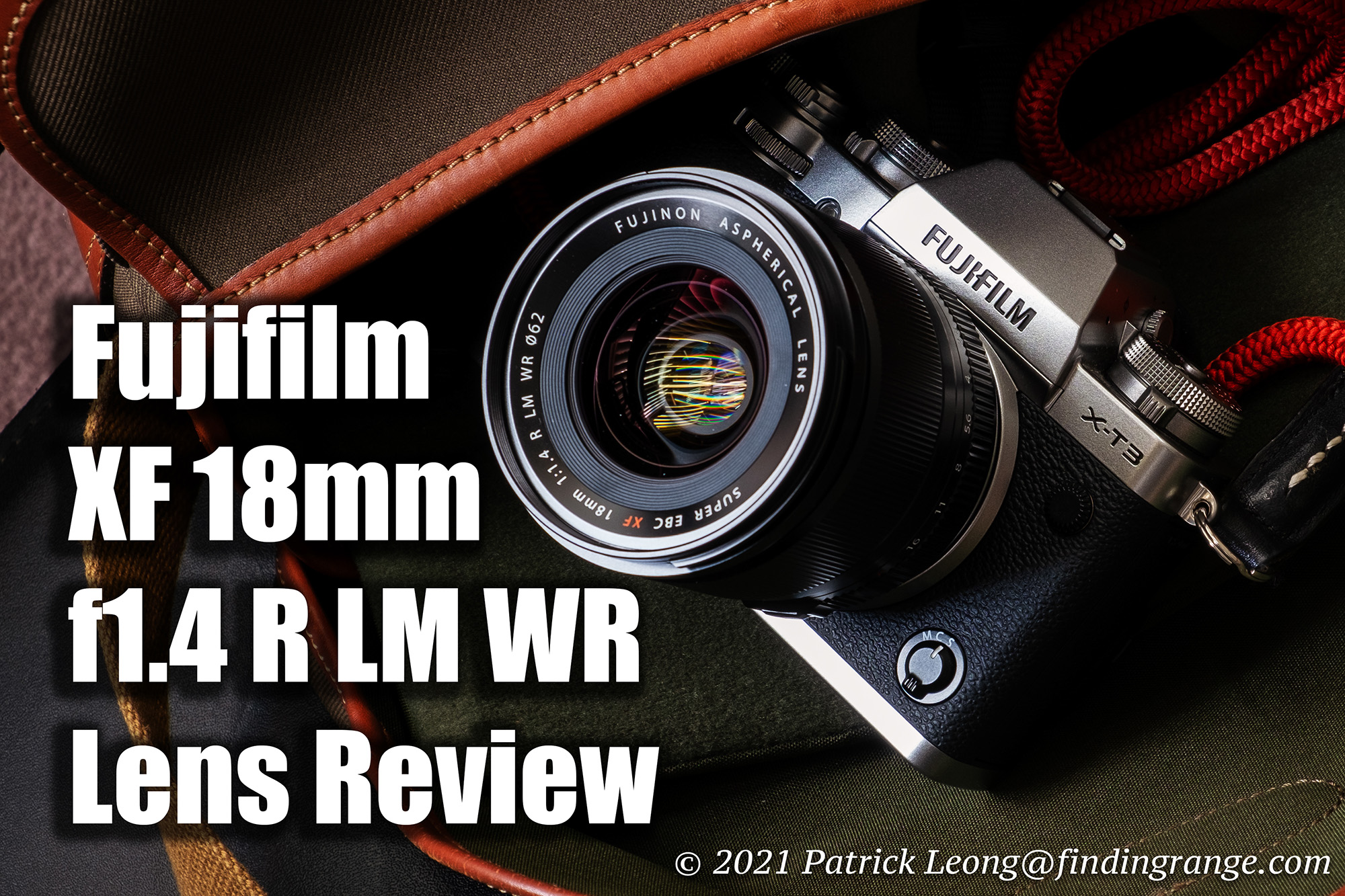Fujifilm XF 18mm f1.4 R LM WR Lens Review:
While the 28mm is probably my least favorite focal length ;), it is definitely a very popular one. The focal length is quite versatile, and therefore, can be used for all types of photography ranging from street, cityscape, landscape to even environmental portraiture. For a while now, if you wanted to purchase a Fujifilm branded 28mm equivalent (well, the 18mm equates to exactly a 27mm), there was only the XF 18mm f2. Now, there’s the new XF 18mm f1.4 R LM WR lens, which is what I was able to test. Here’s what I think of it.
Fujifilm XF 18mm f1.4 R LM WR Lens Build Quality:
I usually like to start things off talking about the overall build, and I have to say, the XF 18mm f1.4 is a well-made lens. This is one of Fujifilm’s newest lenses for the X Series system, it retails for $999, and it’s also what I consider has one of their flagship lenses; the quality should be top notch, and it definitely is in every way. Overall, the lens feels very solid in the hands, thanks in part to its metal barrel. Like most Fujifilm X Series lenses, the XF 18mm f1.4 comes with an aperture ring, and in this case, it clicks distinctly in third stops as you rotate it. The aperture ring also has an A position lock for those times when you want to lock the aperture ring in the A position. There is also a focus ring, which is very smooth. The only minor quibble is a slight “clunk” noise when the camera is off or the lens isn’t mounted to anything (when the power is off). However, it’s nothing to be concerned about; we’ve seen this in past Fujifilm lens designs as well. To me, it’s barely even an issue, and it really doesn’t take anything away from this beautifully designed lens.
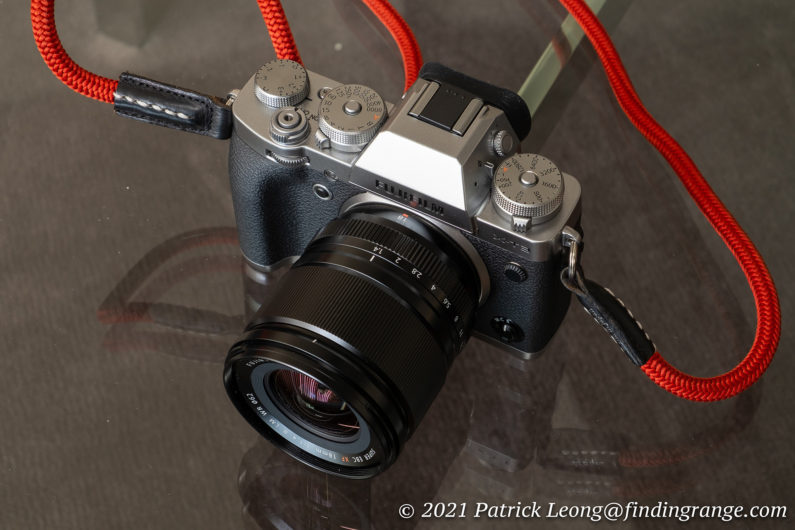
↑ The XF 18mm f1.4 attached to the X-T3.
Furthermore, since the XF 18mm f1.4 R LM WR lens has the “WR” nomenclature, it is weather and dust sealed. In fact, there are eight locations on the lens barrel where there are weather resistant seals. The lens can also be operated in temperatures as low as -10°C (14°F). Bottom line is this is one of those lenses that you can take anywhere with you even when the weather is just not cooperating.
Ergonomically, you want a 28mm equivalent to be easy to use, and carry around all day because it’s one of those lenses where the focal length makes it great for a variety of photographic purposes. In other words, you want something that is versatile. In fact, some might even leave a lens like this mounted on their camera most of the time. The things is f1.4 lenses tend to be larger than their slower siblings, and this is true here as well. The XF 18mm f2 R lens is basically a pancake lens where as the f1.4 is clearly not.
With that said, the ergonomics of the XF 18mm f1.4 R LM WR lens are still quite good. In fact, I found them to be excellent. In terms of weight, the XF 18mm f1.4 is just 13.1 oz / 370 g. Its dimensions are 2.7 x 3″ / 68.8 x 75.6 mm, and it has a 62mm filter thread. With those specs, this really isn’t a lens that will be difficult to carry around all day, as I experienced. I was out in the summer heat as I was testing it. To me, this really fits the definition of an “everyday lens”. It’s small enough that it is discreet for street shooting. It’s light enough that it doesn’t make my X-T3 (review here) front heavy. It’s also a lens that won’t tire you out at the end of the day.

↑ Here’s the lens hood.
In addition to the great build and ergonomics, the XF 18mm f1.4 also comes with a lens hood, and it’s a petal shaped one. If you want a rectangular one, you can purchase the LH-XF 18 Lens Hood, which is also made of aluminum. I’d probably just save the money ;). The lens is great, and I didn’t really have much issue with flare, so I didn’t use the supplied hood much.
Fujifilm XF 18mm f1.4 R LM WR Lens Autofocus:
Focusing wise, the XF 18mm f1.4 R LM WR lens uses an internal focusing system with a linear autofocus motor, and I must say, it is not only blazingly fast, it is also very accurate, and near silent. There’s really not even much to say because the autofocus is so dependable. According to Fujifilm, focusing can take as little as 0.04 seconds. While I have no way of measuring it, I don’t doubt this statement at all. You literally just point and click. There’s no drama whatsoever.
It’s also worth noting that this lens is able to focus very closely. According to Fujifilm, you can focus as close as 7.9″ / 20cm. I imagine this would be quite useful for some, and it along with the focal length, and the maximum aperture, only increases the versatility of this lens.
Fujifilm XF 18mm f1.4 R LM WR Lens Image Quality:
In addition to fantastic autofocus capabilities, the XF 18mm f1.4 R LM WR lens is simply a stunner when it comes to producing photos. As I said before, I am not a fan of the 28mm focal length in general but I found myself always wanting to pick up this lens, and use it, simply because I love the images that it produces. The price for this lens is $999, which doesn’t make it cheap but in my eyes, it’s definitely worth it when it comes to image quality.

↑ This was taken somewhere in Battery Park City using 3200 ISO and f8.
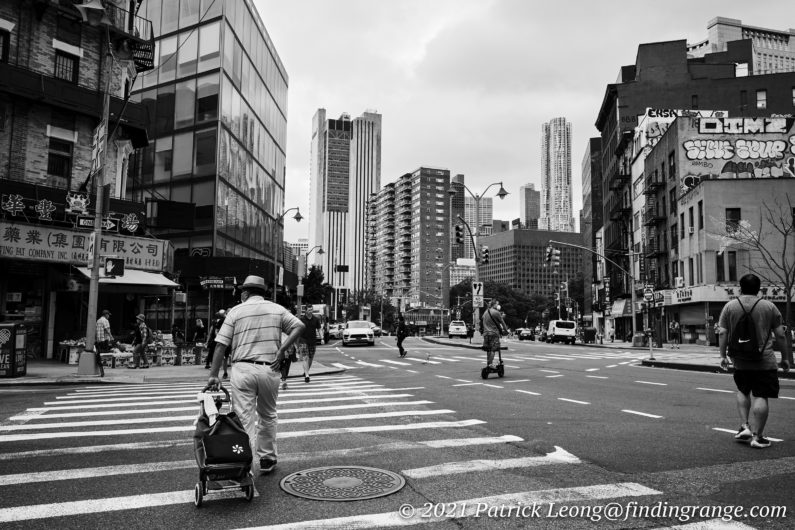
↑ I liked the guy’s hat :). The settings I used were f8 and 320 ISO.
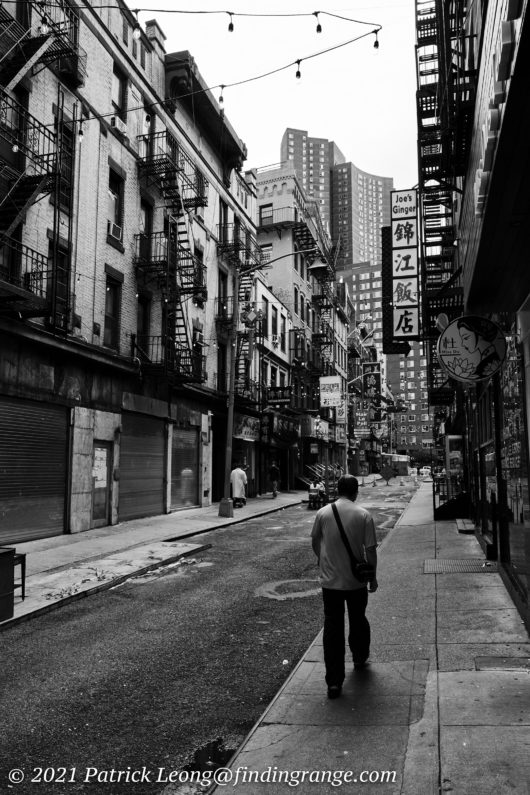
↑ The settings here were 1250 ISO and f8.
It starts out with sharpness which is downright excellent. At f1.4, the center is tack sharp in every way. Even the corners and edges hold up quite well giving you decent results at f1.4. I was very impressed. Stopping down sharpens everything up just a tad bit, and by about f4, the corners sharpen up nicely although it’s difficult to even see a big difference only because of how fantastic this lens already is at its larger aperture settings. I feel that f5.6 to f8 is the range that will produce optimum sharpness but trust me when I say that most will probably not see much of a difference between that range and using say a larger aperture. This is a lens that you should feel free to use throughout its aperture range to produce superb results. While I don’t have any test charts to back this up, I believe this has to be one of the sharpest lenses to come out from Fujifilm. I’ve reviewed almost the entire catalogue of Fujifilm lenses, and this one is particularly impressive in my book.
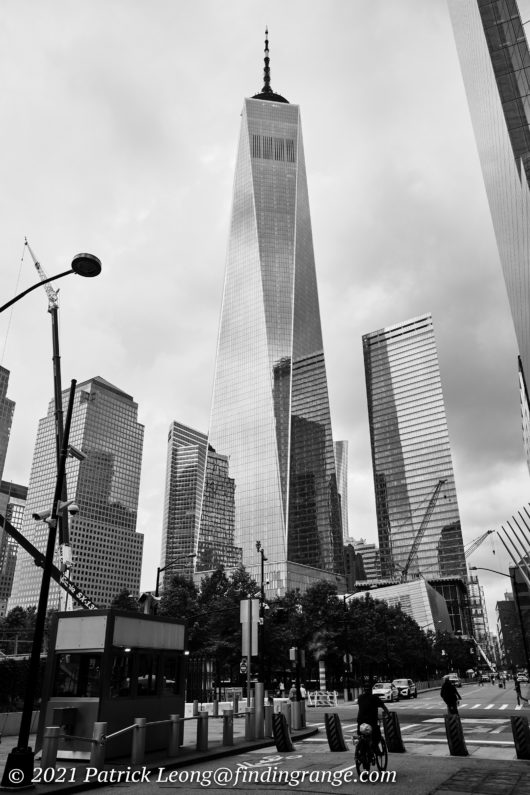
↑ Here’s a photo taken using 160 ISO and f8.
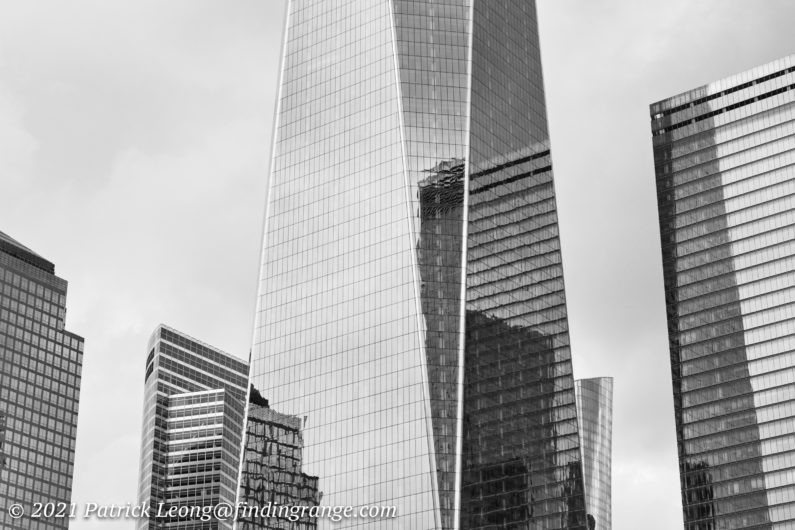
↑ Here’s a 100% crop of the photo above.
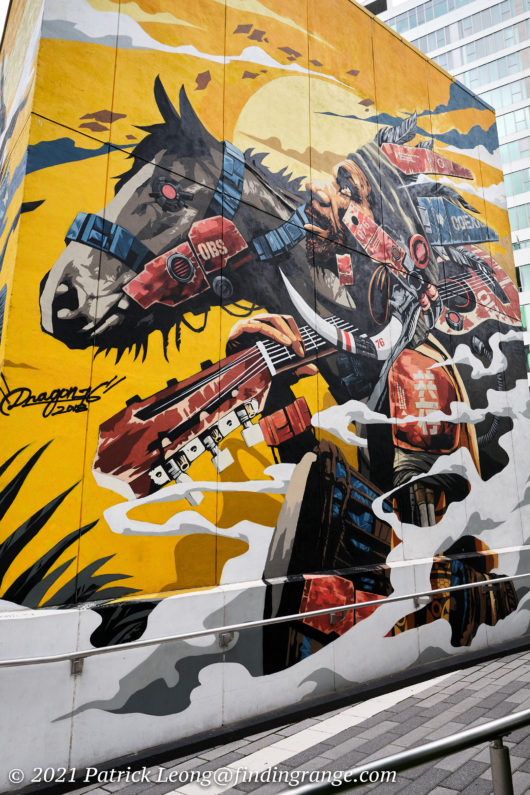
↑ This was taken using f4 and 200 ISO.
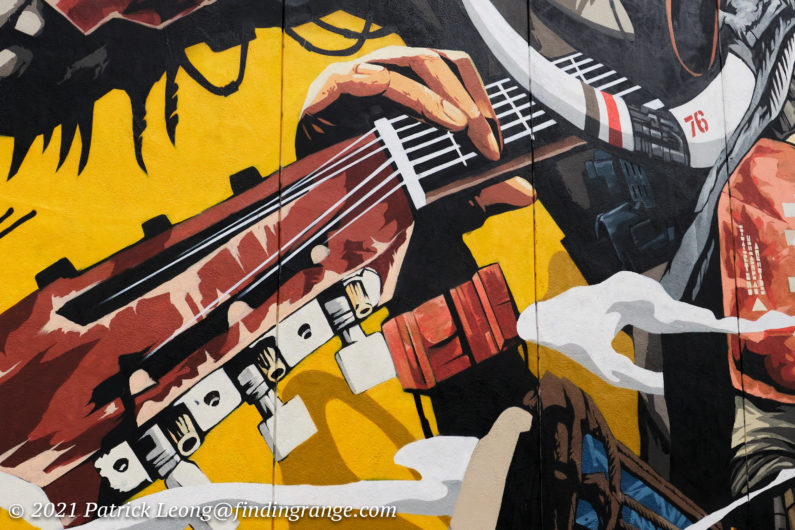
↑ Here’s a 100% crop of the photo above.
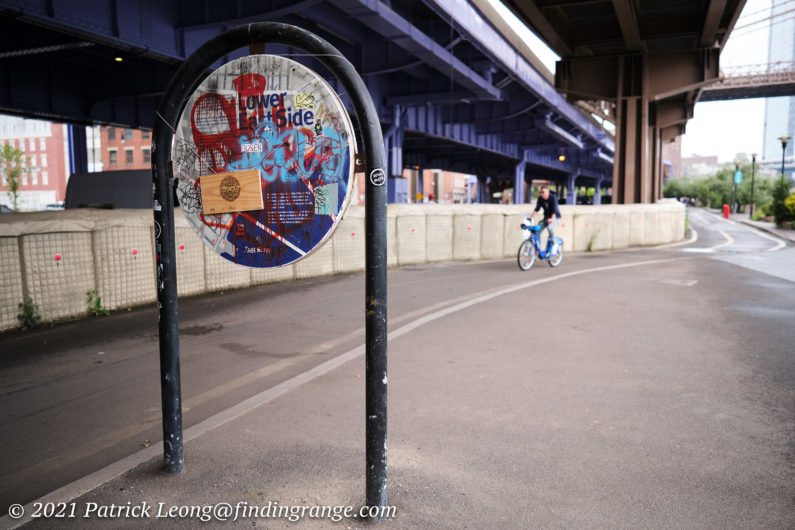
↑ This was taken with f1.4 and 160 ISO down in the Lower East Side.
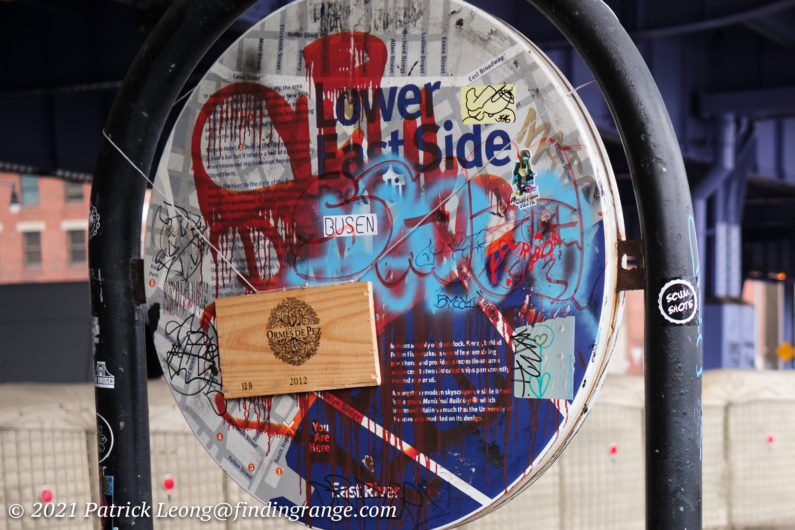
↑ Here’s a 100% crop of the photo above.
Besides sharpness, the XF 18mm f1.4 R LM WR lens has a bunch of features that make it quite desirable. The weather was just not cooperating much when I had the lens to review; as you can see, most of my pictures were taken in muggy or cloudy days. However, I still found color rendering and contrast to be great. I haven’t really seen much chromatic aberration as well. There is some vignetting at f1.4, which is definitely not out of the ordinary but stopping down to just f2 reduces it quite a bit, and by f2.8 to f4, it is essentially gone. I’m also happy to report that flare wasn’t an issue under normal shooting conditions.
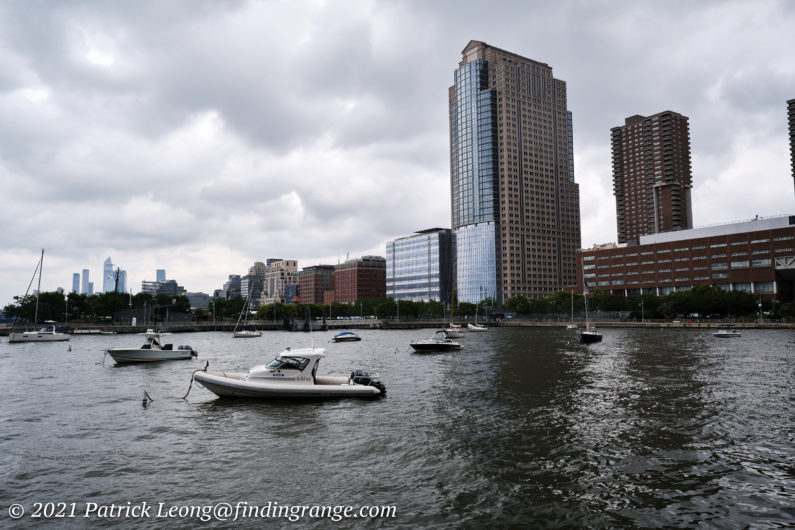
↑ In this photo, I used f9 and 320 ISO. This was taken somewhere in Battery Park City.
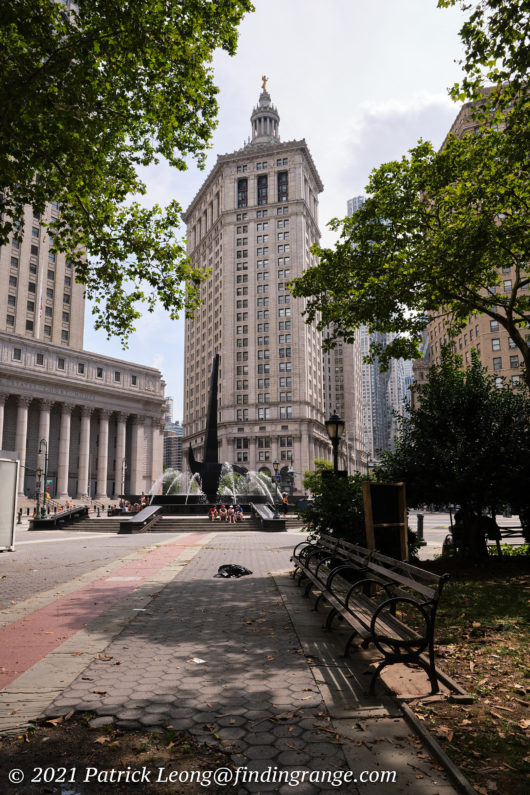
↑ This was taken around the afternoon with the settings being f8 and 250 ISO.
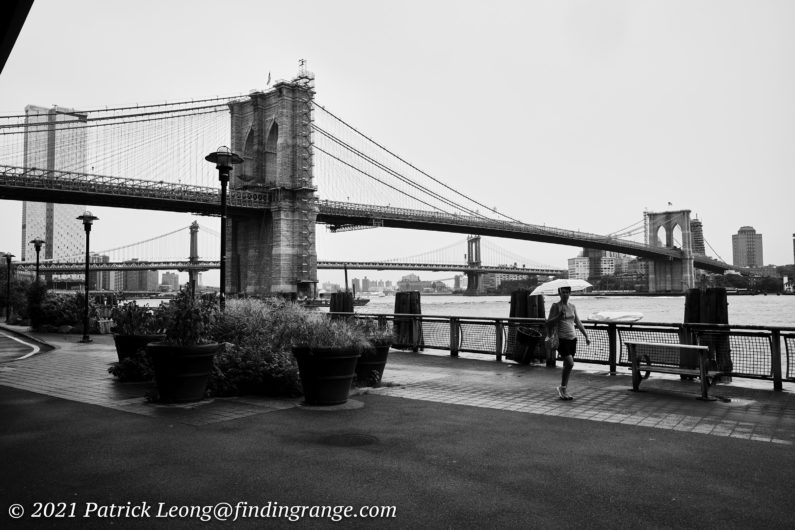
↑ This was taken right when the rain was stopping. The settings were f8 and 160 ISO.
Fujifilm XF 18mm f1.4 R LM WR Lens Bokeh:
Besides gaining more flexibility in poor lighting conditions, a large maximum aperture is great for when you want to produce a shallower depth of field. With the XF 18mm, you have an f1.4 aperture, which can help you isolate your subject even better than with a lens that has a smaller maximum aperture. Still, keep in mind that this is an 18mm lens, so the depth of field isn’t ultra shallow like say with a 50mm f1. If you get close enough though, you can still get some decent isolation of your subject, and produce some great bokeh.

↑ Here’s a photo taken using f1.4 and 160 ISO.
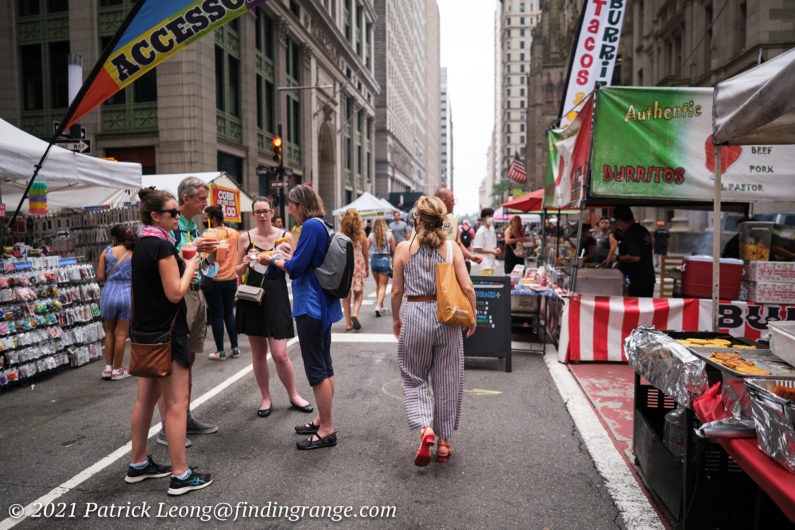
↑ Here’s another photo taken with 160 ISO and f1.4.
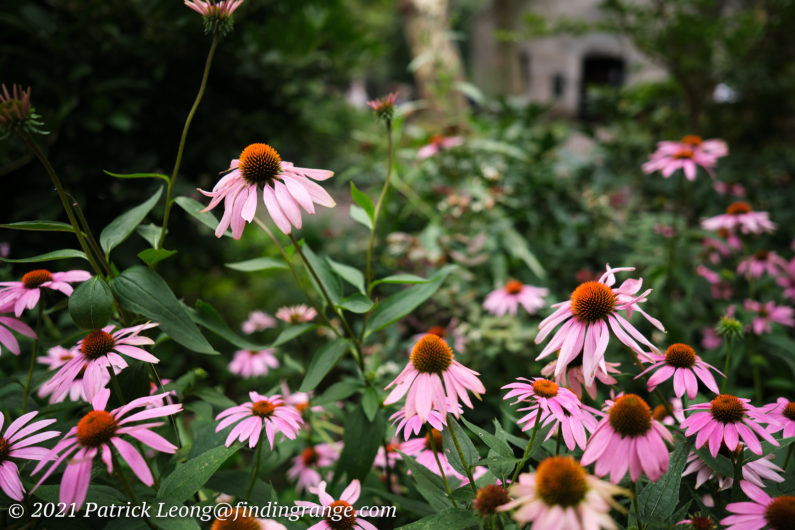
↑ Here’s a bokeh shot taken at f1.4 with 160 ISO used.
Speaking of, thanks in part to the rounded nine-blade diaphragm, bokeh is buttery smooth and inviting. Grant it, I mostly shoot wide angle lenses stopped down but when I did try f1.4, I was very happy with the results. I didn’t see anything that was particularly harsh. The XF 18mm f1.4 R LM WR lens always produced a beautifully smooth looking bokeh for me, which also helped add a bit more three dimensional character to the images.
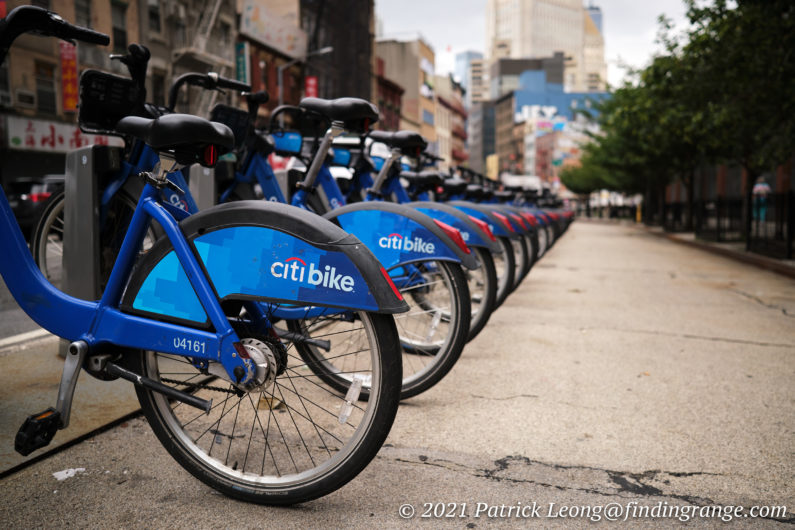
↑ The settings here were f1.4 and 160 ISO.

↑ Here’s one more photo taken with f1.4 and 160 ISO.
Pros And Cons:
Pros:
- Solid lens that is well made.
- Compact, light, and generally easy to handle: great ergonomics.
- Weather and dust sealed.
- Blazingly fast autofocus.
- Superb image quality.
- Fast f1.4 maximum aperture.
- Great bokeh.
Cons:
- There is a slight “clunk” noise inside the lens when it’s not powered.
- It’s not cheap.
Fujifilm XF 18mm f1.4 R LM WR Lens Verdict:
If you’re looking for a 27mm (basically a 28mm) equivalent focal length for your Fujifilm camera, there isn’t another lens that I would recommend more, at least from what I have reviewed so far. The XF 18mm f1.4 R LM WR lens is simply brilliant.
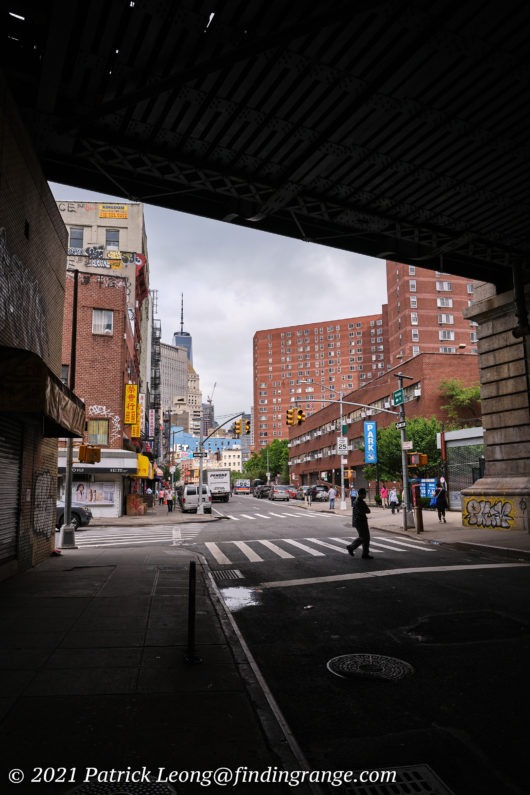
↑ This was taken somewhere in Chinatown with the settings being 160 ISO, and f5.6.

↑ Here’s a photo taken around the Lower East Side with the settings being f5.6 and 1250 ISO.
It really has so much going for it. For one, it has the build that inspires confidence. The autofocus is not only extremely fast, it is accurate, and quiet. Image quality is also superb.
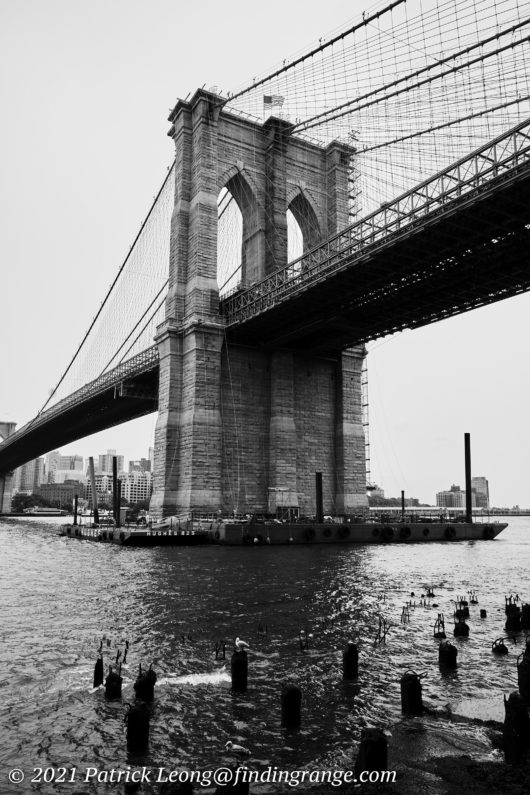
↑ This was taken with 160 ISO and f8.
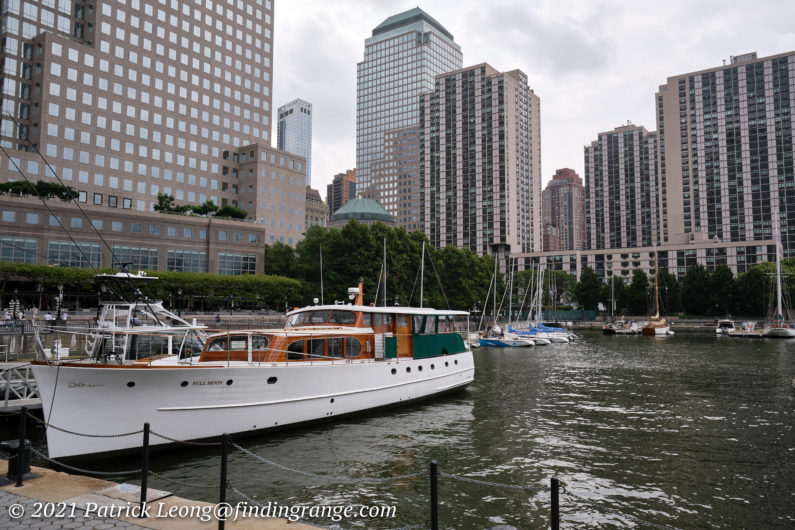
↑ Here’s another photo taken around the Battery Park City area using f8 and 160 ISO.
To top it off, the ergonomics are great. I feel the XF 18mm f1.4 R LM WR lens is compact, and easy to handle for long periods even though it has a max aperture of f1.4. To me, its ergonomics are one of the most important traits because this is a 27mm equivalent. Many photographers are going to be walking around quite a lot with a lens like this, and they need something that won’t be a burden at the end of the day. They also need something discreet for street photography, which I imagine many will do with this lens.
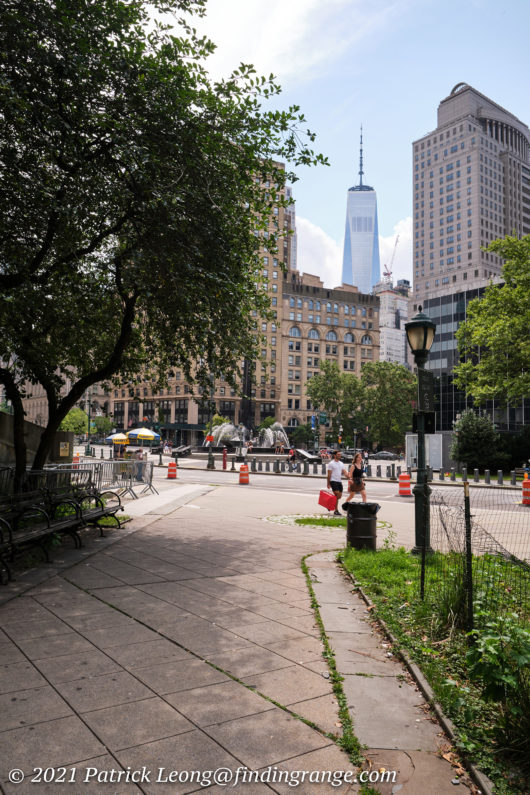
↑ This was taken around the court houses in downtown Manhattan. The settings were f8 and 250 ISO.

↑ This was taken with f8 and 160 ISO.
In terms of downsides, there’s really not much here, at least to me. The biggest issue that I see, which is actually a tiny issue I don’t even find important, is a slight “clunk” noise when the lens is powered down. This is something we’ve seen in other Fujifilm lenses before, and it’s nothing to be concerned about. The other downside is the price, which is $999. However, this is a quality lens, and I don’t think Fujifilm is really being unreasonable here.

↑ Here’s one more photo of the Fuji X-T3 and XF 18mm f1.4 R LM WR lens combo.
Bottom line is the XF 18mm f1.4 R LM WR lens is a fantastic addition to the X Series system. This is how much I loved using it: as I said numerous times, the 28mm focal length is my least favorite focal length. In addition to this lens, I had three other Fujifilm X mount lenses shipped to me as well to review. In the end, the funny thing is I ended up with tons more pictures from the XF 18mm f1.4 than with any of the other three lenses. So, if you’re looking for an 18mm lens for your Fujifilm camera, I recommend you take a closer look at this one. This is just one impressive piece of glass.
Thanks for taking the time to read my review! If you’re considering purchasing the Fuji XF 18mm f1.4, and my review helped you decide, please help support this site by purchasing from the links below or any mentioned in this review. It will not cost you anything extra. Thank you for your support!

